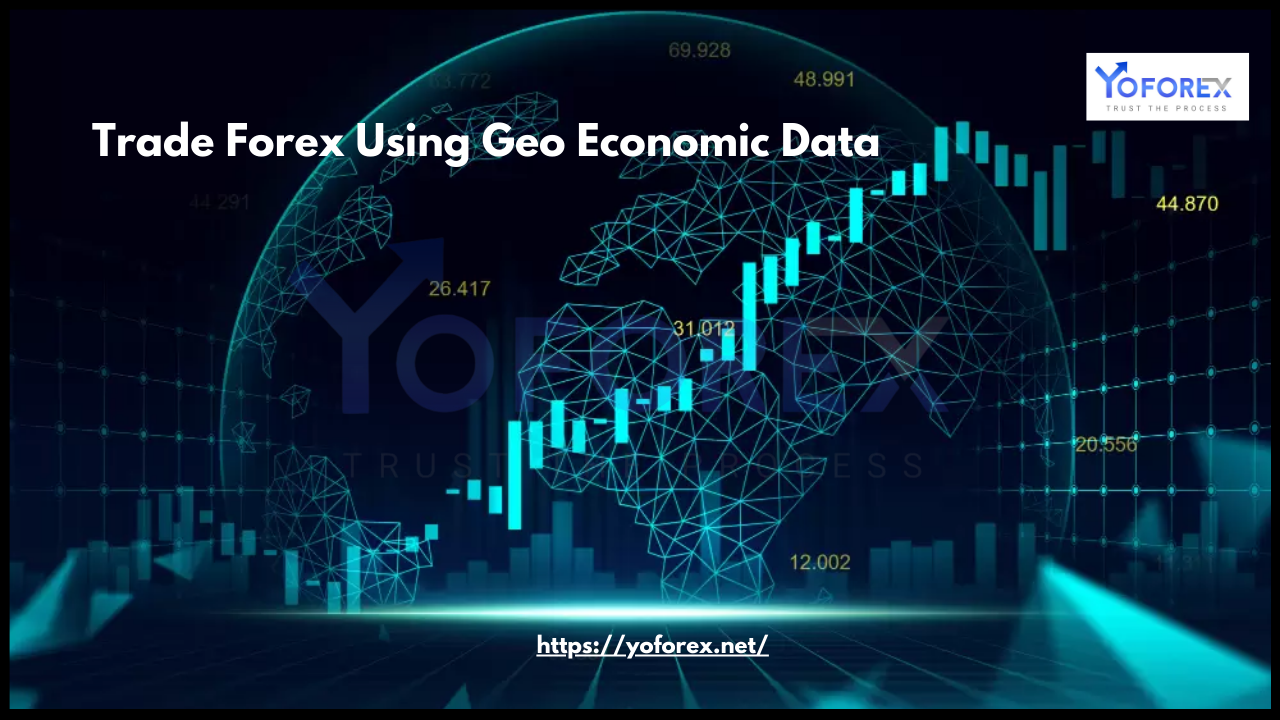The forex market is the largest financial market in the world, driven by a complex interplay of economic indicators, political events, and global trade dynamics. While traders often rely on technical and fundamental analysis, a lesser-known but highly effective approach is using geo-economic data. This method combines geopolitical events and economic data to make informed trading decisions. In this article, we will explore how geo-economic data influences forex trading and how traders can use this information to gain an edge in the market.
Understanding Geo-Economic Data
Geo-economics is the study of the interaction between geopolitics and economics. It focuses on how political decisions, international relations, trade policies, and economic conditions impact global markets. Geo-economic data includes:
- Political stability and risks
- Trade agreements and disputes
- Economic sanctions
- Natural resource distribution
- Major infrastructure projects
- Cross-border investments
- Military conflicts or tensions
By analyzing these factors, traders can anticipate currency movements influenced by global events and economic shifts.
How Geo-Economic Data Impacts Forex Markets
1. Political Stability and Currency Strength
Countries with stable governments and predictable policies often have stronger currencies. For example, the Swiss Franc (CHF) is considered a safe-haven currency due to Switzerland’s political neutrality and economic stability. In contrast, political turmoil can lead to currency depreciation, as seen in cases like Brexit’s impact on the British Pound (GBP).
2. Trade Agreements and Currency Valuation
Trade agreements impact currency values by influencing trade balance and investor confidence. A positive trade agreement between two major economies can boost their respective currencies. For example, the United States-Mexico-Canada Agreement (USMCA) had a notable impact on the U.S. Dollar (USD), Mexican Peso (MXN), and Canadian Dollar (CAD).
3. Economic Sanctions and Forex Volatility
Economic sanctions can significantly weaken a country’s currency. For instance, sanctions imposed on Russia in 2022 led to a sharp decline in the Russian Ruble (RUB), affecting global forex markets. Traders who monitor geopolitical developments can position themselves accordingly.
4. Natural Resources and Commodity Currencies
Countries rich in natural resources, such as oil, gold, and gas, often see their currencies fluctuate based on commodity prices. For example, the Canadian Dollar (CAD) and Australian Dollar (AUD) are heavily influenced by crude oil and metal prices, respectively. Geo-economic analysis of resource availability and trade restrictions can help traders anticipate currency trends.
5. Infrastructure Projects and Economic Growth
Large infrastructure projects can boost a country’s economy and strengthen its currency. For example, China’s Belt and Road Initiative (BRI) has impacted the Chinese Yuan (CNY) and several emerging market currencies due to increased investment and trade activity.
6. Military Conflicts and Market Reactions
Wars and conflicts create market uncertainty, often leading to capital flight toward safe-haven currencies like the U.S. Dollar (USD), Swiss Franc (CHF), and Japanese Yen (JPY). Traders tracking geopolitical tensions can use this information to adjust their forex positions accordingly.

How to Incorporate Geo-Economic Data in Forex Trading
1. Follow Reliable News Sources
Stay updated with geopolitical and economic news from trusted sources like Bloomberg, Reuters, and the Financial Times. Government reports and central bank statements also provide crucial insights.
2. Use Economic Calendars
Forex traders should monitor economic calendars that highlight key events, such as interest rate decisions, GDP releases, and trade reports. Combining this data with geopolitical developments provides a clearer trading strategy.
3. Analyze Currency Correlations
Understanding currency correlations helps traders predict movements based on geo-economic trends. For instance, when oil prices rise, the Canadian Dollar (CAD) typically strengthens due to Canada’s reliance on oil exports.
4. Utilize Risk Management Strategies
Geo-economic factors can cause sudden market swings. Using stop-loss orders, hedging strategies, and diversifying your portfolio can minimize risks associated with geopolitical uncertainties.
5. Monitor Central Bank Policies
Central banks play a significant role in forex movements. Their policies are often influenced by geo-economic factors such as inflation, trade policies, and international relations. Monitoring central bank statements can provide valuable trading insights.
6. Engage in Sentiment Analysis
Market sentiment is heavily affected by geopolitical events. Tracking social media trends, news sentiment, and investor behavior can help traders gauge market direction and avoid unexpected volatility.
Case Studies
Case Study 1: Brexit and the British Pound
Brexit negotiations caused significant fluctuations in GBP/USD. Each announcement, whether positive or negative, led to market reactions. Traders who analyzed Brexit-related developments were able to capitalize on these movements.
Case Study 2: U.S.-China Trade War
The U.S.-China trade war caused volatility in the forex market, particularly affecting USD, CNY, and commodity currencies like AUD. Traders who followed tariff announcements and trade negotiations positioned themselves profitably.
Case Study 3: Russia-Ukraine Conflict
The war in Ukraine led to extreme volatility in EUR, USD, and RUB. The sanctions imposed on Russia had a direct impact on the Russian Ruble, while the Euro faced pressure due to Europe’s reliance on Russian energy. Safe-haven assets, including gold and CHF, saw increased demand.
Conclusion
Geo-economic data provides forex traders with a unique advantage by allowing them to anticipate currency movements based on global events. By incorporating political stability, trade agreements, economic sanctions, and other geo-economic factors into their analysis, traders can make more informed decisions. Staying updated with current events, using economic calendars, and applying risk management strategies can help forex traders successfully navigate the ever-changing forex market.

